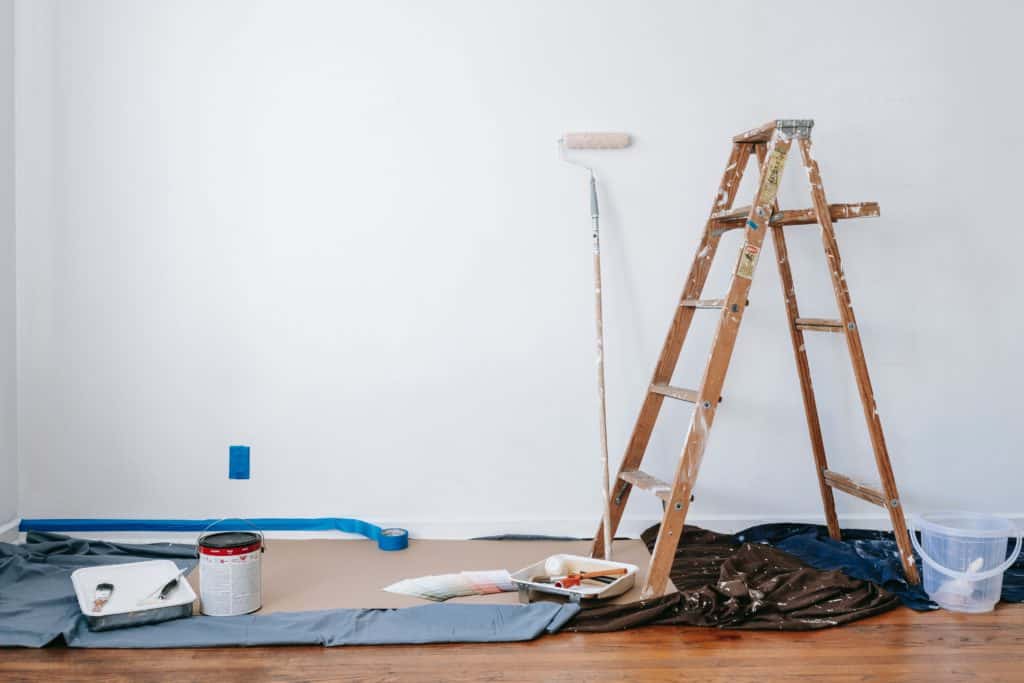
As parents, we are always looking for ways to make our homes more comfortable and inviting for our families. We also want to do our part to protect the environment. Thankfully, there are many ways we can accomplish both of these goals with eco-friendly home improvements. Here are 11 tips to get you started:
1.) Use recycled materials whenever possible.
Recycled glass can be used to create beautiful mosaic tiles. Recycled metal can be used to make stunning sculptures or decorative wall hangings. Even something as simple as a recycled paper towel roll can be transformed into a chic vase or pencil holder. The possibilities are endless!
Not only is recycling a great way to reduce waste, but it can also add a unique and personal touch to your home. Another option is to use reclaimed wood for built-in shelving or flooring. This wood can often be found for free or at a relatively low cost and gives your home a unique look.
If you’re interested in using recycled materials for your next home improvement project, there are a few things you need to keep in mind. First, make sure you’re using materials that are safe and non-toxic. Check with your local recycling center or thrift store for supplies. Finally, have fun and get creative! There’s no wrong way to recycle.
2.) Consider solar power for your home.
Solar power is one of the cleanest and most renewable sources of energy available. It doesn’t produce any harmful emissions, and it can be harvested from virtually anywhere in the world. Additionally, solar power is becoming increasingly affordable as technology improves and more homes and businesses make the switch.
Solar panels can be used to generate electricity, heat water, or even power an entire home or office. And since they rely on sunlight, they can be installed almost anywhere. So if you’re looking for a clean, renewable, and cost-effective way to power your home or business, solar power is worth considering.
3.) Make sure your insulation is up to par.
Good insulation will help keep your home warm in the winter and cool in the summer, which means you won’t have to use as much energy to heat and cool your home. It also helps prevent moisture buildup, leading to mold and mildew growth.
Home insulation isn’t usually the first thing that comes to mind when you think of going green. But adding eco-friendly insulation to your home is a great way to reduce your energy consumption and carbon footprint.
Several types of eco-friendly insulation are available on the market, made from materials like recycled glass, cellulose, wool, and even soybeans. Some brands even offer recycled denim insulation. Not only is eco-friendly insulation good for the environment, but it’s also usually more effective than traditional fiberglass insulation.
So if you’re looking for a way to make your home more energy-efficient, consider adding eco-friendly insulation. Your wallet – and Mother Earth – will thank you.
4.) Choose energy-efficient appliances.
When it’s time to upgrade your appliances, choose energy-efficient models. Energy-efficient appliances can save you money and help to protect the environment. Most major appliances come in energy-efficient models, including refrigerators, ovens, dishwashers, and washing machines.
Energy-efficient appliances use less electricity than traditional models, meaning they cost less. In addition, energy-efficient appliances often have longer lifespans, meaning they will need to be replaced less often. When choosing energy-efficient appliances, look for the ENERGY STAR label. This label is given to appliances that meet strict energy efficiency standards set by the US Environmental Protection Agency.
ENERGY STAR appliances use 10-50% less energy than traditional models, making them an excellent choice for anyone interested in saving money and reducing their environmental impact.
5.) Get a programmable thermostat.
A programmable thermostat can save you money on your energy bill and help to keep your home comfortable year-round. You can save on heating and cooling costs by programming the thermostat to automatically lower the temperature at night or when you are away from home. Some programmable thermostats can even learn your schedule and adjust the temperature accordingly.
Popular models of programmable thermostats include the Nest Thermostat and the Honeywell Lyric Thermostat. These devices can be controlled via smartphone or tablet, making it easy to adjust the temperature even when you are away from home. Whether you want to save money or simply have more control over your home’s climate, a programmable thermostat is a wise investment.
6.) Use compact fluorescent light bulbs
While incandescent bulbs are the traditional choice for household lighting, compact fluorescent light bulbs (CFLs) are a much more energy-efficient option. CFLs use about 75% less energy than incandescent bulbs and last up to 10 times longer.
This means that not only will you save money on your energy bill by switching to CFLs, but you’ll also save money on replacement bulbs. In addition, CFLs produce very little heat, which can help keep your home cooler in summer. And because they don’t contain mercury, they’re a safe and green choice for your home.
7.) Upgrade your windows and doors for increased efficiency.
Upgrading your windows and doors is a fantastic eco-friendly home improvement project that can help increase the efficiency of your home. Newer windows and doors are designed to be more energy efficient, which can help keep your home cooler in the summer and warmer in the winter.
If you live in an area with many extreme weather conditions, upgrading to hurricane-resistant windows and doors can also provide peace of mind during severe storms.
Upgrading your doors and windows along with improving their seals can help you save money on your energy bills, and it can also help reduce your carbon footprint. In addition, upgrading your windows and doors can also help improve the security of your home. Newer windows and doors are often made with more robust materials that are more resistant to break-ins.
8.) Install low-flow plumbing fixtures.
Homeowners looking for an eco-friendly home improvement project should consider installing low-flow plumbing fixtures. Low-flow fixtures can help to reduce water waste and lower your monthly water bill. In addition, they can also help to improve your home’s overall efficiency.
One of the most common low-flow fixtures is the low-flow toilet. Low-flow toilets use less water per flush, saving a significant amount of water over a year. upgrading all of the toilets in your home to low-flow models could lead to a savings of thousands of gallons of water. In addition to toilets, low-flow showerheads and faucets are also available.
These fixtures typically have a lower flow rate than standard models and can help you save water without sacrificing performance. Installing low-flow plumbing fixtures is a great way to make your home more efficient and eco-friendly.
9.) Paint with low – VOC paint.
VOCs, or volatile organic compounds, are found in many traditional paints and can harm the environment and your health. However, low-VOC paints have much lower VOCs, making them a safer choice for your home and the planet. In addition, low-VOC paints often have superior color retention and coverage, meaning you can enjoy your new paint job for longer.
10.) Refinish existing furniture instead of buying new furniture.
Refinishing existing furniture is a great way to give it new life without creating more waste or contributing to deforestation.
Not everyone is born with a natural talent for refinishing furniture, but that doesn’t mean it’s impossible to learn. With a bit of patience and practice, anyone can refinish furniture and give old pieces a new lease on life. Not only is refinishing furniture a great way to save money, but it’s also an eco-friendly home improvement project.
There are a few different ways to refinish furniture, and the best method will depend on the piece of furniture you’re working with. For instance, sanding and staining or painting are excellent options if you’re dealing with a piece of wood furniture that has seen better days. Reupholstering is usually the best way to go if you’re working with upholstered furniture.
There are plenty of resources available to help you learn how to refinish furniture. Youtube is a great place to start, as tons of instructional videos are available. You can also find great books on the subject at your local library or bookstore. Once you’ve gotten the hang of it, you’ll be surprised at how addictive refinishing furniture can be!
11.) Buy used appliances & furniture when possible.
When it’s time to replace an old appliance, consider buying a used one instead of a new one. This saves resources and cuts down on pollution from manufacturing new appliances. Thrift stores are absolute gold for snagging high-quality furniture at low prices.
I need to get a coffee table for my living room, and it’s tempting to browse Amazon, but I know that my budget will go a lot farther at a secondhand store, and the purchase will be much less wasteful that way.
Conclusion
These are just a few of the many ways you can make your home more eco-friendly. You can help preserve resources and save money simultaneously by making simple changes.
Have you tackled any eco-friendly home improvement projects lately? Share in the comments, and let’s discuss!
Featured photo credit: Blue Bird from Pexels

